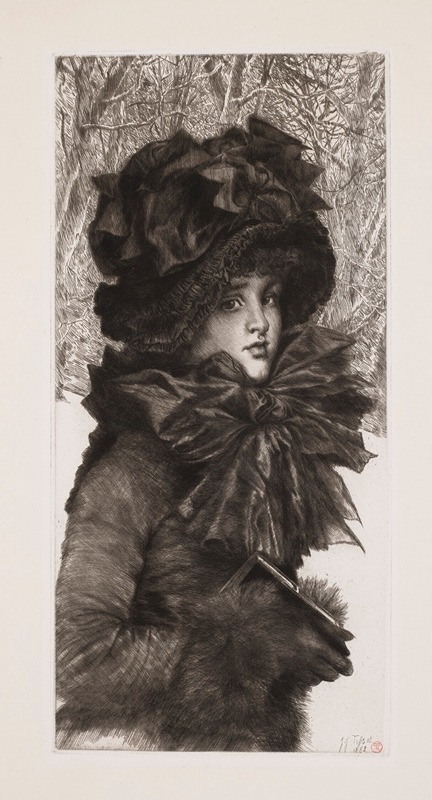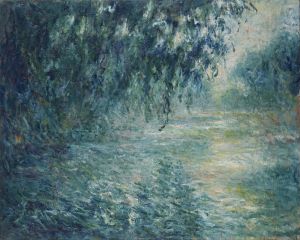
Dimanche matin
A hand-painted replica of James Tissot’s masterpiece Dimanche matin, meticulously crafted by professional artists to capture the true essence of the original. Each piece is created with museum-quality canvas and rare mineral pigments, carefully painted by experienced artists with delicate brushstrokes and rich, layered colors to perfectly recreate the texture of the original artwork. Unlike machine-printed reproductions, this hand-painted version brings the painting to life, infused with the artist’s emotions and skill in every stroke. Whether for personal collection or home decoration, it instantly elevates the artistic atmosphere of any space.
"Dimanche matin" (Sunday Morning) is a painting by the French artist James Tissot, created in the late 19th century. James Tissot, born Jacques Joseph Tissot on October 15, 1836, in Nantes, France, was a renowned painter and illustrator known for his detailed and fashionable depictions of contemporary life in the Victorian era. Tissot's work often captured the social customs and leisure activities of the upper-middle class, and "Dimanche matin" is a fine example of his ability to portray the nuances of social interaction and fashion.
The painting "Dimanche matin" is part of Tissot's broader exploration of modern life, particularly focusing on the themes of leisure and society. Tissot had a keen eye for detail and a talent for capturing the essence of his subjects, often infusing his works with a narrative quality that invites viewers to ponder the stories behind the scenes he depicted. His works are characterized by their vibrant colors, intricate details, and the ability to convey the textures of fabrics and materials with remarkable precision.
"Dimanche matin" illustrates a scene typical of a Sunday morning, likely set in a park or garden, where people of the time would gather for leisure and socialization. The painting showcases Tissot's skill in rendering the fashions of the day, with figures dressed in elegant attire, reflecting the styles of the late 19th century. The composition of the painting is carefully arranged to guide the viewer's eye through the scene, highlighting the interactions between the figures and the serene atmosphere of the setting.
Tissot's work often reflects his interest in the social dynamics of his time, and "Dimanche matin" is no exception. The painting captures a moment of tranquility and social engagement, offering a glimpse into the leisurely pursuits of the era's bourgeoisie. Tissot's attention to detail extends to the background and surroundings, where he meticulously paints the natural elements, adding depth and context to the scene.
James Tissot's career was marked by his ability to adapt and evolve his style, influenced by his experiences in both France and England. After moving to London in 1871, Tissot became associated with the Aesthetic Movement, which emphasized beauty and art for art's sake. His time in England significantly impacted his work, as he began to focus more on the subtleties of social interaction and the complexities of human relationships.
"Dimanche matin" is a testament to Tissot's mastery of capturing the essence of his era, blending realism with a touch of narrative intrigue. The painting remains a valuable piece for understanding the cultural and social fabric of the late 19th century, offering insights into the leisurely activities and fashion of the time.
James Tissot's legacy endures through his extensive body of work, which continues to be celebrated for its technical brilliance and insightful portrayal of Victorian society. His paintings, including "Dimanche matin," are housed in various museums and collections worldwide, where they continue to be appreciated by art enthusiasts and historians alike.


















